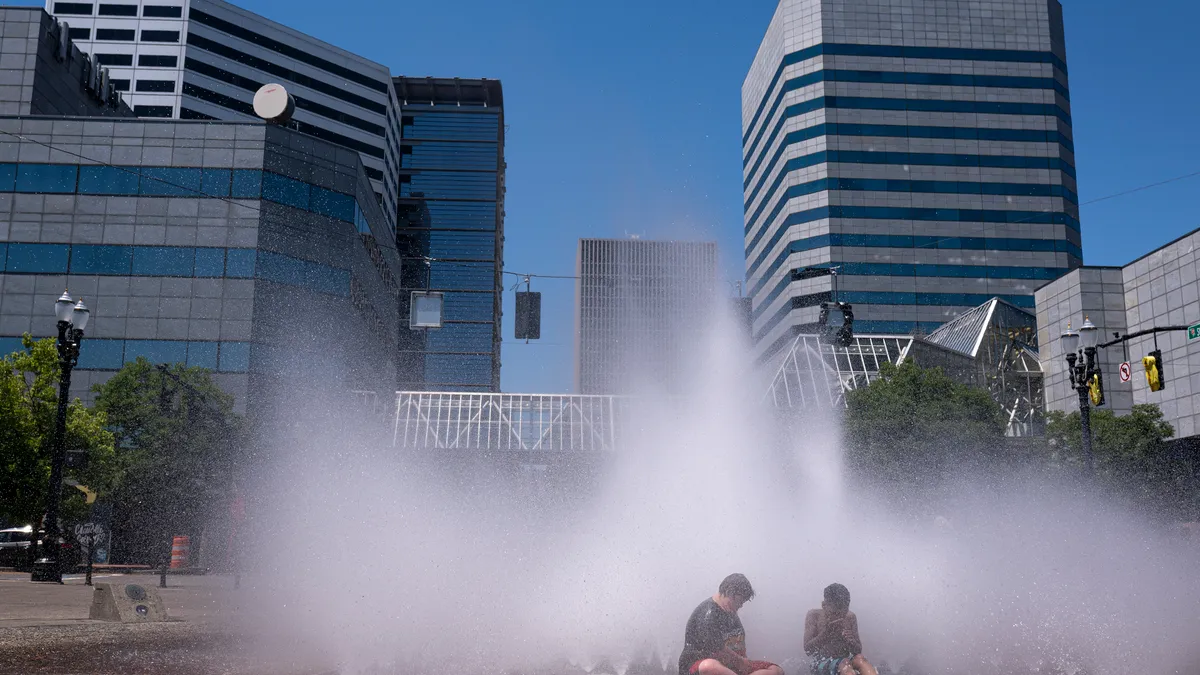As heat waves blanket much of the U.S. this week, local governments are increasingly looking to help their residents combat the perils of extreme heat.
“A lot of our larger cities have been focusing on this issue for a long time — New York, Los Angeles, [though] they still have a lot to do — but more and more cities are becoming interested and starting to take action,” said Victoria Ludwig, program manager for the U.S. Environmental Protection Agency’s heat island reduction program, at a Wednesday webinar hosted by the Federal Emergency Management Agency.
While cities primarily have been concerned with the immediate threat of extreme heat on residents’ health, Ludwig said, jurisdictions now are looking at it through a larger and longer-term lens that includes environmental justice concerns and how to prevent future heat waves from being as severe.
Ludwig also pointed to the growing interest in nature-based solutions such as trees as well as cool pavement — technologies that reduce the heat stored by pavement. “[Cool pavement] used to be kind of a nascent technology,” she said. “It's getting more and more robust and proven, and if you do it at a large enough scale, you can cool down the city.” Los Angeles, Phoenix and San Antonio are among the cities using the technology.
But barriers to progress remain, Ludwig said. Addressing extreme heat requires cross-departmental work — for example, among the climate office, health department and emergency response officials — which many local governments have not yet done. Plus, solutions to cool the built environment, such as green roofs, increased tree canopy and cool pavement, still need to be scaled up to be effective at a neighborhood level. “It can be done, but it is a challenge to do these kinds of interventions at scale,” Ludwig said.
Questions also remain around how cities should evaluate the success of extreme heat interventions, she said, including whether and by how much increased tree canopy reduces temperatures. “Those are really important, as you guys know, for policymakers, in order to justify budget expenses,” Ludwig said.
The federal government has a role in lowering these barriers for local governments, she added. For example, local officials could benefit from improved guidance on how to “braid together” the many federal funding opportunities, Ludwig said. The federal government could also do more to promote effective local solutions nationwide, “so that New York City doesn't have to run around calling other cities [asking] ‘What did you do?’” she said.
Where local officials are looking to start extreme heat response efforts, webinar panelists urged them to visit heat.gov, a federal online resource launched last summer that is home to a plethora of heat-related tools, resources and funding opportunities. The resource is an ideal landing page for busy emergency response managers who wish they “had 28 hours in a day and would use every single hour,” said Thomas Sivak, FEMA administrator for Region 5, which includes Illinois, Indiana, Michigan, Minnesota, Ohio and Wisconsin.












